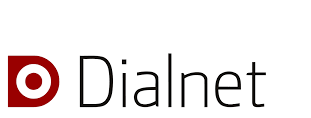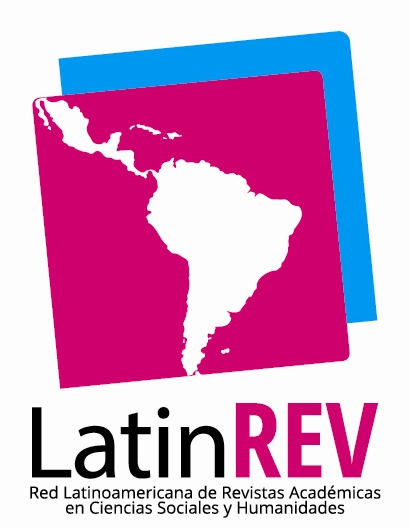English language training from the students’ perspective
Keywords:
engineering, English, communicative competence, advanced students, opinionsAbstract
This work is part of the research project "Study of teaching practices of English in the Faculty of Engineering and Agricultural Sciences (FICA) of the National University of San Luis (UNSL) and its relationship with the demands of the working environment". Among the various tasks that were carried out within the framework of the project, a survey was conducted to enquire on advanced engineering students’ formation. This survey also inquired about their perceptions on the importance of their training in English. This research is of a mixed nature, with “qualitative preponderance” (Johnson et al., 2006, in Hernández Sampieri, Fernández Collado and Baptista Lucio, 2010, p. 546), since the numerical data with which we worked were subjected to subjective interpretations. The results obtained from the 99 respondents revealed that most of them consider that the training provided by our institution is not sufficient since they would not be able to enter and continue working in multinational companies of the region or to expand their academic possibilities.Downloads
References
Astigarraga Echeverría, E.; Agirre Andonegi, A. y Carrera Farran, X. (2017). “Innovación y cambio en la Formación Profesional del País Vasco. El modelo ETHAZI”, en Revista Ibero-americana de Educação, Vol. 74, 55-82.
Balmaceda, L. (6 de julio de 2013). Propuesta teórica del Dr. Pichón Riviére [artículo de blog]. Recuperado de: http://procesogrupal.overblog.com/la-propuesta-te%C3%B3rica-de-pichon-riviere
Becerra Marsano, A. M. y La Serna Studzinski, K. (2010). Las competencias que demanda el mercado laboral de los profesionales del campo económico-empresarial en la actualidad. Documento de Discusión del Centro de Investigación de la Universidad del Pacífico. Recuperado de: http://repositorio.up.edu.pe/handle/11354/358
Bergmann, J. y Sams, A. (2012). Flip Your Classroom: Reach Every Student in Every Class Every Day. Arlington: IST.
Bishop, J. y Verleger, M. (2013). The Flipped Classroom: A Survey of the Research. American Society for Engineering Education.
Canale, M. y Swain, M. (1980). "Theoretical bases of communicative approaches to second language teaching and testing". Applied Linguistics, 1(1). Recuperado de: https://www.researchgate.net/publication/31260438_Theoretical_Bases_of_Communicative_Approaches_to_Second_Language_Teaching_and_Testing
Consejo Federal de Decanos de Ingeniería (CONFEDI) (2014). Competencias en Ingeniería, Recuperado de: http://redi.ufasta.edu.ar:8080/xmlui/bitstream/handle/123456789/409/Comp_Confedi_978%E2%80%90987%E2%80%901312%E2%80%9062%E2%80%907_red.pdf?sequence=1
Davini, M. C. (2008). Métodos de enseñanza. Didáctica general para maestros y profesores. Buenos Aires: Santillana.
Domínguez, M. B.; Laurenti, L. y Lucero, V. (2018). “Innovar para Aprender: el Aula Invertida”, en Scagnoli, N. (Ed), Abriendo Caminos hacia Prácticas Educativas Innovadoras, 45-62. San Luis: Nueva Editorial Universitaria.
Edelstein, G. (2002). “Problematizar las prácticas de la enseñanza”, en PERSPECTIVA, Florianópolis, Vol. 20, N° 2, 467-482.
Evseeva, A. y Solozhenko, A. (2015). "Use of Flipped Classroom Technology in Language Learning". Procedia - Social and Behavioral Sciences, 206, 205-209.
García Espejo, I. e Ibáñez Pascual, M. (2006). “Competencias para el empleo. Demandas de las empresas y medición de los desajustes”, en Revista Internacional de Sociología (RIS), Vol. LXIV, N° 43, 139-168.
García Jurado Velarde, R. (2009). “Una propuesta para la Enseñanza de la comprensión de lectura en inglés”, en Perfiles Educativos, XXXI, N° 123, 60-78. Recuperado de: http://www.scielo.org.mx/pdf/peredu/v31n123/v31n123a5.pdf
Hernández Sampieri, R., Fernández Collado, C. y Baptista Lucio, P. (2010). Los métodos mixtos. Metodología de la investigación, Méjico: McGraw Hill Interamericana.
Lage, M.; Platt, G. y Treglia, M. (2000). “Inverting the classroom: A gateway to creating an inclusive learning environment”, in The Journal of Economic Education, Vol. 31, N° 1, 30-43.
López García, J. C. (2014). La Taxonomía de Bloom y sus Actualizaciones. Eduteka. Recuperado de: http://eduteka.icesi.edu.co/articulos/TaxonomiaBloomCuadro
Lozano, R. (2011). “De las TIC a las TAC: tecnologías del aprendizaje y del conocimiento”, en Anuario ThinkEPI, Vol. 5, 45-47.
Martínez Olvera, W.; Esquivel Gámez, I. y Martínez Castillo, J. (2015). “Acercamiento TeóricoPráctico al modelo de Aprendizaje Invertido”, en Research Gate. Septiembre 2015. Doi: 10.13140/RG.2.1.2653.6087
Neshyba, S. (2013). It’s a Flipping Revolution. The Chronicle of Higher Education. Recuperado de: http://www.chronicle.com/article/Its-a-Flipping-Revolution/138259/
Prieto, A.; Díaz, D. y Santiago, R. (2014). Metodologías inductivas. El desafío de enseñar mediante el cuestionamiento y los retos. Barcelona, España: Océano S.L.U.
Stone Wiske, M. (2006). Enseñanza para la comprensión con tecnologías. Buenos Aires: Paidós.
Talbert, R. (2012). Inverted Classroom. Colleagues: 9 (1) Artículo 7. Recuperado de: http://scholarworks.gvsu.edu/colleagues/vol9/iss1/7
Talbert, R. (2014). Inverting the Linear Algebra Classroom, PRIMUS, 24:5, 361-374. doi: 10.1080/10511970.2014.883457
Downloads
Published
Issue
Section
ARK
License
Copyright (c) 2019 Marcela Rivarola, María Belén Domínguez,, Giuliano Ardissone, Cecilia Aguirre Céliz

This work is licensed under a Creative Commons Attribution 4.0 International License.






